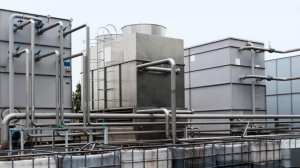please click here:
https://www.gssmt-parts.com/smt-production-consumables-item.html
Surface Mount Technology (SMT) assembly relies heavily on precision and efficiency to produce high-quality electronic products. Among the critical components in this process are SMT nozzles and feeders, which work together to ensure accurate, fast, and reliable placement of surface mount devices (SMDs) onto printed circuit boards (PCBs). This article provides an extensive overview of SMT nozzles and feeders, their types, functions, maintenance, and best practices to optimize SMT production lines.
Understanding SMT Nozzles
What Are SMT Nozzles?
SMT nozzles are specialized tools attached to pick-and-place machines, designed to pick up electronic components from feeders and place them precisely on PCBs. They use vacuum suction to securely hold components during transport and placement, ensuring accuracy and preventing damage.
How Do SMT Nozzles Work?
SMT nozzles operate based on the inflation (vacuum) principle. Inside the nozzle, a cavity connects to a vacuum system that generates negative pressure. The nozzle tip, often equipped with a flexible suction cup containing multiple small holes, creates a seal with the component surface. This vacuum holds the component firmly as the pick-and-place machine moves it from the feeder to the PCB, where it is released by turning off the vacuum and sometimes applying a slight air blow.
Types of SMT Nozzles
SMT nozzles come in various shapes, materials, and sizes to handle different component types:
-
Round Nozzles: Versatile and common, ideal for small components like resistors and capacitors.
-
Square Nozzles: Designed for square or rectangular ICs, providing stable grip.
-
Needle Nozzles: Slim and elongated for accessing tight spaces on densely packed PCBs.
-
V-Shaped Nozzles: Tailored for components requiring angled placement or with specific shapes.
-
Vacuum Nozzles: Utilize vacuum suction for secure component handling across many applications.
-
Custom Nozzles: Made to fit unique component shapes or special placement requirements.
Materials Used in SMT Nozzles
-
Tungsten Steel: Durable and strong, but may develop white spots over time; can be treated to extend life.
-
Ceramic: Resistant to whitening and wear but fragile and prone to breakage.
-
Diamond Steel: Extremely durable and wear-resistant but costly.
-
Rubber Head: Suitable for sticky or uneven components but with shorter lifespan; often replaced frequently.
Importance of Nozzle Selection
Choosing the correct nozzle type and size is crucial to ensure proper component pickup, prevent damage, and maintain placement accuracy. Nozzle size typically corresponds to the component size, and shape should match the component's geometry for optimal handling.
Exploring SMT Feeders
What Is an SMT Feeder?
An SMT feeder is a device that supplies components to the pick-and-place machine in a controlled and continuous manner. It presents components from tapes, trays, sticks, or tubes to the machine's nozzle for pickup.
Types of SMT Feeders
-
Tape Feeders: The most common type, handling components in carrier tapes. Modern tape feeders are often high-precision electric types with fast feeding speed and stable performance.
-
Tray Feeders: Used for larger or fragile components housed in trays. They can be single-layer or multi-layer, with multi-layer feeders saving space and supporting more components.
-
Stick Feeders: Also called vibration feeders, they feed bulk components loaded in plastic boxes or bags, suitable for non-polar cylindrical or rectangular components.
-
Tube Feeders: Use vibration to feed components continuously from tubes, protecting component pins but generally less stable and efficient.
How SMT Feeders Work
Feeders advance components to a fixed pickup position where the nozzle can pick them up. Tape feeders peel back the cover tape and present components sequentially, while tray feeders use robotic arms or conveyors to present components. Vibratory feeders use vibration to move components along a track.
Importance of Feeder Quality
Reliable feeders ensure smooth component supply, reducing machine stoppages and misfeeds. High-precision feeders improve placement accuracy and production efficiency.
The Interplay Between SMT Nozzles and Feeders
The pick-and-place process depends on seamless coordination between nozzles and feeders:
-
The feeder must present components accurately and consistently at the pickup point.
-
The nozzle must pick up components securely without damage or misalignment.
-
Both must be compatible in terms of component size, shape, and packaging.
Failures in either can cause placement errors, production delays, or component damage.
Maintenance and Troubleshooting
Common Nozzle Issues and Solutions
-
Loss of Vacuum: Leads to missed pickups or dropped components. Causes include nozzle wear, blockages, or vacuum leaks. Regular cleaning and inspection help prevent this.
-
Nozzle Wear and Deformation: Worn or bent nozzles reduce pickup reliability. Scheduled replacement and careful handling extend nozzle life.
-
Sticking Nozzles: Caused by material deformation or contamination, leading to placement errors. Proper material selection and cleaning reduce sticking.
-
ESD Damage: Electrostatic discharge from nozzles can damage sensitive components. Using ESD-safe materials and grounding practices mitigates this risk.
Common Feeder Problems and Solutions
-
Feeder Jams: Often caused by cover tape issues or misaligned feeder fingers. Regular cleaning and proper tape loading techniques prevent jams.
-
Component Misfeeds: Can result from incorrect feeder settings or worn parts. Calibration and maintenance improve feed accuracy.
-
Vibration Feeder Instability: Requires adjustment of vibration intensity and proper component loading.
Maintenance Best Practices
-
Clean nozzles daily with dust-free cloths and appropriate tools; avoid corrosive solutions.
-
Inspect nozzles for wear or damage regularly.
-
Clean feeders to remove debris and ensure smooth tape movement.
-
Replace worn or damaged parts promptly.
-
Keep spare nozzles and feeder components on hand to minimize downtime.
Selecting the Right SMT Nozzles and Feeders
Factors to Consider
-
Component Types: Match nozzle and feeder types to component size, shape, and packaging.
-
Machine Compatibility: Ensure feeders and nozzles fit the pick-and-place machine model.
-
Material Quality: Choose durable materials for nozzles and reliable feeder mechanisms.
-
Supplier Support: Opt for manufacturers providing technical support and maintenance guidance.
-
Customization: For unique components or production needs, consider custom nozzles or feeders.
Emerging Trends
-
Smart Nozzles and Feeders: Integration with IoT for real-time monitoring and predictive maintenance.
-
Advanced Materials: Use of ceramics, diamond coatings, and ESD-safe materials for durability and safety.
-
Automation Enhancements: Auto-loading feeders and quick-change nozzles to reduce setup time.
Frequently Asked Questions (FAQs)
1. What is the main function of an SMT nozzle?
An SMT nozzle picks up surface mount components using vacuum suction and places them accurately onto PCBs during assembly.
2. How do tape feeders differ from tray feeders?
Tape feeders handle components in carrier tapes and are common for small parts, while tray feeders are used for larger or fragile components housed in trays.
3. Why is regular maintenance important for SMT nozzles and feeders?
Maintenance prevents vacuum loss, jams, wear, and contamination, ensuring consistent placement accuracy and minimizing production downtime.
4. Can the same nozzle be used for different component sizes?
No, nozzles are typically sized and shaped to match specific component dimensions for optimal pickup and placement.
5. What materials are commonly used for SMT nozzles?
Common materials include tungsten steel, ceramic, diamond steel, and rubber, each with different durability and application characteristics.
Article Summary
This comprehensive guide explores SMT nozzles and feeders, key components in surface mount technology assembly. It covers their types, functions, maintenance, and selection criteria, emphasizing their critical role in ensuring precise, efficient, and reliable PCB assembly. Proper choice and care of nozzles and feeders optimize production quality and reduce downtime.






